In 2022, the total fisheries production in the province of Marinduque was 3,487.19 metric tons. It fell by 41.57 percent when compared to the previous year's production of 5,968.65 metric tons. This is due to a simultaneous drop in the volume of production across all fisheries subsectors, specifically a 61.01 percent drop in aquaculture, a 42.09 percent drop in municipal fisheries, and a 24.17 percent drop in commercial fisheries. (Figure 1)
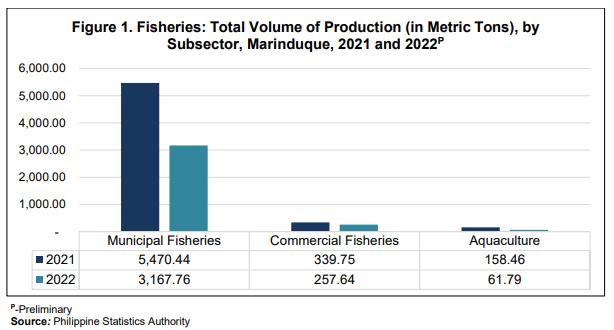
Of the overall production, municipal fisheries produced the most in 2022, accounting for 90.84 percent of total output, followed by commercial fisheries at 7.39 percent, and aquaculture at 1.77 percent. (Figure 3)
Comparably, municipal fisheries accounted for 91.65 percent of the overall fisheries production in 2021. Commercial fisheries came in second with a 5.69 percent portion, and aquaculture came in third with a 2.65 percent share. (Figure 2)
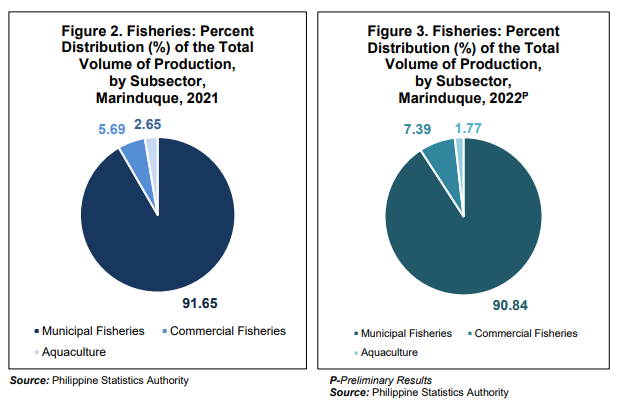
Volume of Commercial Fisheries Output Dropped by 24.17 percent
An estimated 257.64 metric tons of catch were unloaded from commercial fishing in 2022, representing a 24.17 percent decrease from the previous year's catch.
Roundscad (galunggong) had the highest production of the species caught in 2022, with an estimated 110.28 metric tons. This was followed by frigate tuna (tulingan) and bali sardinella (tamban) with respective volumes of 60.76 metric tons and 38.91 metric tons. The species with the lowest catch, on the other hand, was caesio (dalagang-bukid) with a catch of 0.001 metric tons. (Table 1)


The volume of municipal fisheries output dropped by 42.09 percent
Municipal fishermen unloaded a total of 3,167.76 metric tons of catch in 2022, which is 42.09 percent less than the previous year's production of 5,470.44 metric tons.
Of the total production of municipal fisheries, 95.86 percent came from marine municipal fisheries with the rest coming from inland municipal fisheries. (Figure 4)
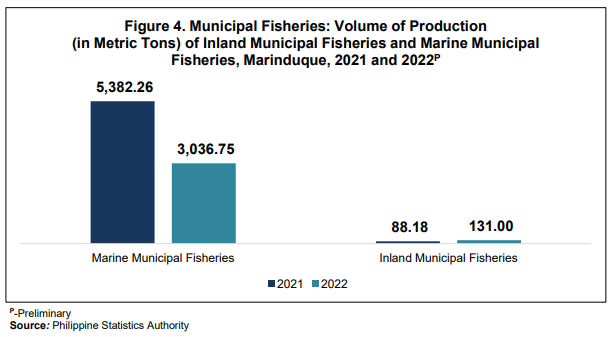
Marine municipal fisheries saw a 43.58 percent reduction from the unloadings of the previous year. Among the species in the marine fisheries, frigate tuna (tulingan) had the largest unloadings of 298.39 metric tons. Followed by skipjack (gulyasan) with 297.93 metric tons, and roundscad (galunggong) with 289.17 metric tons. These were the top three most unloaded marine municipal fisheries species in the province. The least amount of unloadings, however, was for fimbriated sardines (tunsoy) with 0.93 metric tons.(Table 2)
Among the species in marine municipal fisheries, porgies (pargo), siganid (samaral), and crevalle (salay-salay) were the species to have achieved positive gains of 293.89 percent, 9.43 percent, and 17.85 percent, respectively. (Table 2)
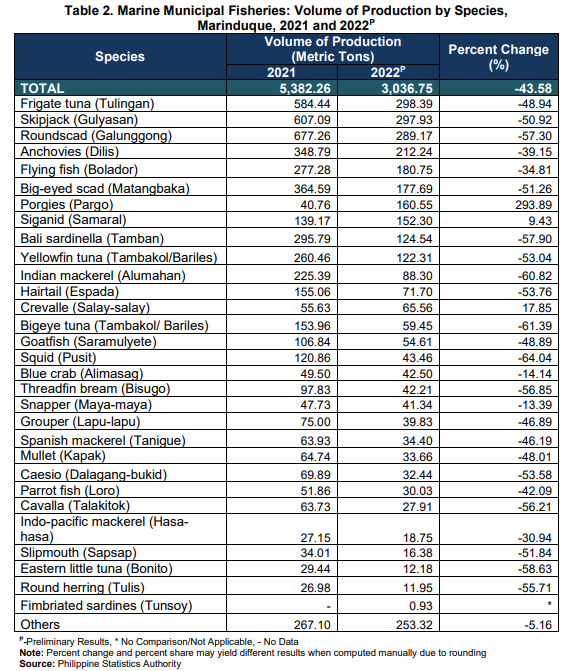
In contrast, inland municipal fisheries experienced a gain of 48.56 percent in 2022. Tilapia topped the list of fish species with the highest haul, estimated at 35.65 metric tons, followed by freshwater goby (biya) (29.82 metric tons) and catfish (hito) (24.60 metric tons). The top three crustacean species in terms of catch were white shrimp (hipong puti), freshwater shrimp (hipon), and mud crab (alimango), with 5.36 metric tons, 2.32 metric tons, and 0.84 metric tons, respectively. Molluscs caught included snails (suso) with 5.58 metric tons, clams (kabibi) with 1.13 metric tons, shells (kuhol) with 0.89 metric tons, and freshwater clams (tulya) with 0.47 metric tons. (Table 3)
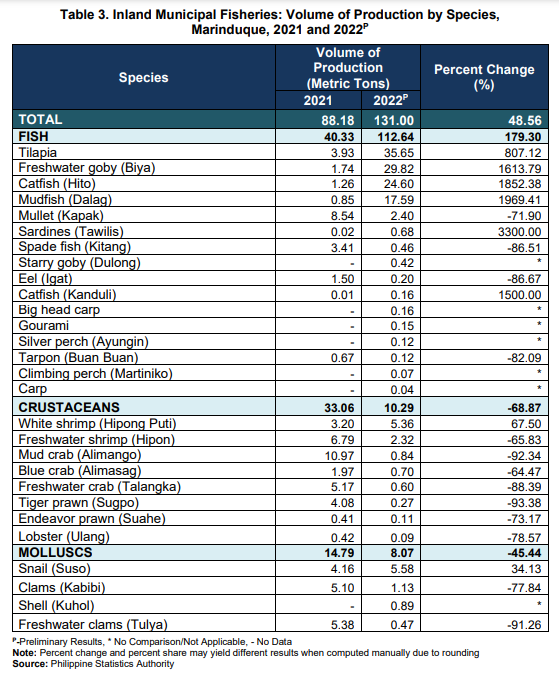
Volume of Aquaculture Output Dropped by 61.01 percent
The amount of aquaculture production in 2022 decreased by 61.01 percent compared to 2021. This is primarily due to the significant 80.52 percent decline in brackishwater production. Seaweed likewise posted a decline of 5.49 percent. Freshwater fishpond, on the other hand, gained 2,540.00 percent. (Table 4)
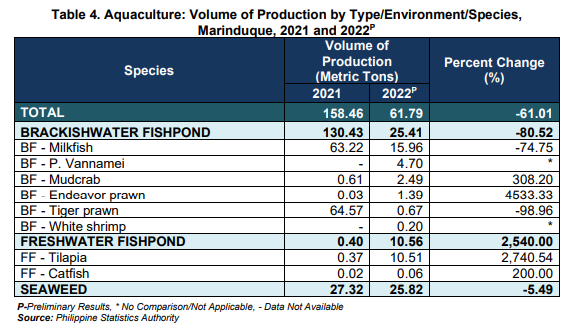
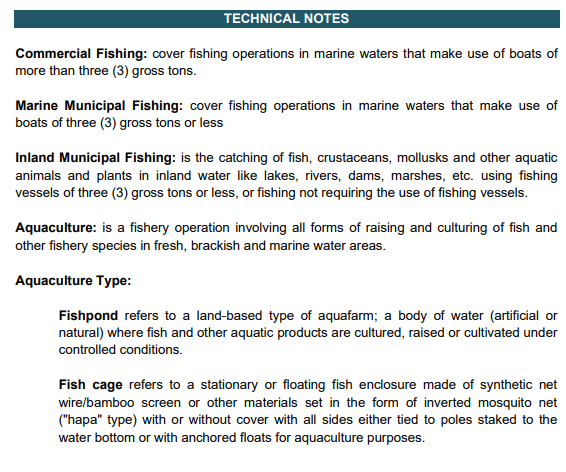
(SGD)GEMMA N. OPIS
Chief Statistical Specialist
PSA PSO Marinduque
GNO/SJRDC

